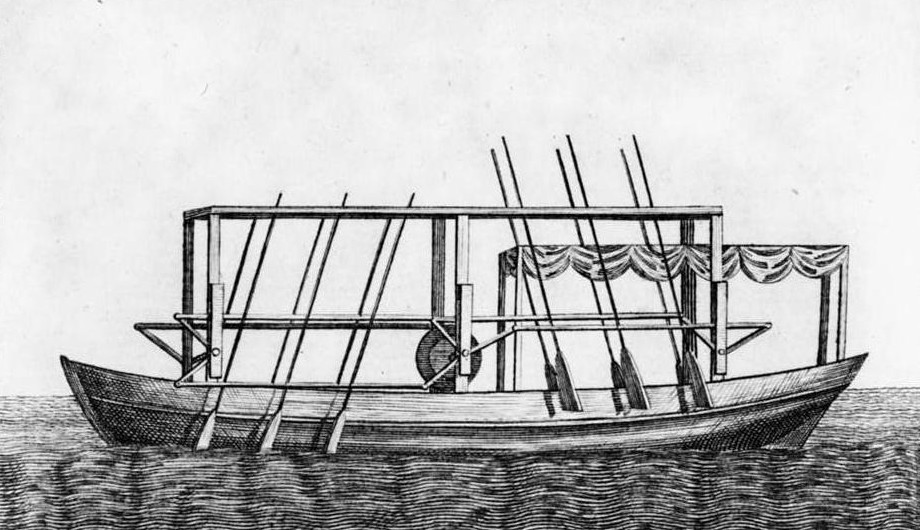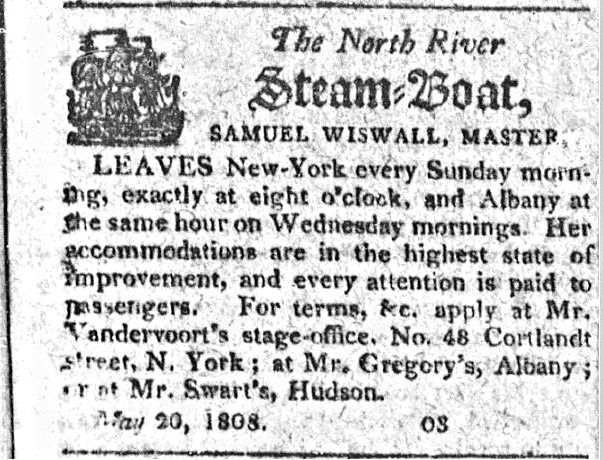A steamboat is driven mainly by steam power and is typically used to drive propellers or paddlewheels. Steamboats may use the prefix designations like SS, SS, or S/S for “Screw Steamer” or PS for “Paddle Steamer,” but these were the most commonly used names for steamships.
Before the invention of trains, automobiles, trucks, and airplanes, people traveled by ships on the sea. These ships transported both people and goods from one location to other. The sea travel was usually slow because the travel speed was determined by the river’s current and manpower. That all changed in the late 1700s and early 1800s with the introduction of steam-powered boats.
The steam-powered boats could travel at incredible speeds of up to five miles per hour. They quickly revolutionized river travel and trade and dominated the rivers and streams. However, the dangers of a steamboat traveling like an explosion, sinking, Indian attacks, and daring riverboat races captured the country’s imagination.
The 19th and 20th centuries’ great steam-powered ships also played a significant role in the United States’ westward expansion. Other modes of transportation gradually surpassed steamboats in importance, but they ruled the nation’s transportation for a time.
Significant Events in the History of Steam Boating
1. John Fitch Built a 45-Foot Steamboat in 1787
In 1787, John Fitch built the first 45-foot long steamboat and floated it down the Delaware River. John built four more steamboats similar to the first one. However, they were more expensive to create and develop. And since they were costly, his steamboats were unsuccessful.
2. Oliver Evans Designed an Improved High-Pressure Steam Engine in 1801
Oliver Evans, a Philadelphian inventor, was born in Newport, Delaware, to a Welsh settler’s family. In 1801, he designed an improved high-pressure system but wasn’t able to build it because the Philadelphia Board of health was worried about dredging and cleaning the city’s dockyards.
Evans persuaded them to contract with him for a steam-powered dredge named the Oruktor Amphibolos in 1805. It was built even though it was not partially successful. Evan’s high-pressure steam engine had a substantially greater power-to-weight ratio, which made it suitable for use in locomotives and steamboats.
Evans got so disappointed with the lack of protection afforded to inventors under US patent law that he destroyed all of his engineering drawings and invention ideas. He did this to prevent his children from fighting in courts regarding patent infringements.
3. Livingston as Minister to France Expressed Interest in Steam Engines in 1803
Thomas Jefferson appointed Livingston as a minister to France, where he met Fulton in 1803. Livingston, like Fulton, was interested in using steam engines to power the boats. He persuaded Fulton to return to New York and construct a steam-powered boat.
4. Robert Fulton Starts Creating Steam Boats in 1807
Robert Fulton was born in the Pennsylvania county of Lancaster. He started working as a painter in Philadelphia by the age of 17. Fulton came to London in 1786, where he pursued his lifelong passion for science and engineering as a new profession. Fulton was mainly interested in steam engines and the prospect of employing one to power a boat.
In 1806, Robert Fulton went to New York and began creating a riverboat on the East River on the demand of Livingston. The Clermont, the steamboat built by the inventor Robert Fulton in 1807, was the first successful steamboat. The Clermont was a result of the combined effort of Fulton and Robert Livingston.
On August 17, 1807, Fulton’s steamboat, the Clermont, made its inaugural voyage on the Hudson River, traversing 40 miles from New York to Albany in an eight-hour record.
Following the Clermont’s successful initial journey, it made four-day trips from Albany to New York regularly. It could carry up to 100 passengers at a time. Fulton had discovered a means to make steam-powered boats practical and profitable, and thus the age of steamboats began.
5. The Keelboats Started Transporting Commodities Along the Rivers of South by 1810
By 1810, flat-bottomed keelboats were introduced that transported goods along the rivers of the South. These keelboats transported commodities to and from communities as well as port cities like Mobile and New Orleans.
The river current determined the pace of these boats, and if the boatmen changed their cargo and returned upriver from where they started, they had to pole the boats against the current. A round-trip journey could take up to nine months.
Because an upstream trip was so tricky, Keelboat owners frequently dismantled their boats and sold the timber at their destination. They would then travel back home overland. Until the mid-19th century, when faster and more powerful ships gained popularity, keelboats were the most popular mode of river travel.
6. The First Line of Steamboats Left the Pittsburgh Dock In 1811
The steamboats use on big rivers of the US quickly followed after Fulton’s success in 1807. In 1811, the first continuous line of river steamboats steamed down the Ohio River to Mississippi and to New Orleans.
An association in Sackets Harbor in New York funded the first US steam boat’s construction in 1817, kicking off the lake’s commercial and passenger traffic growth. Mark Twain, the pilot and author, described much of the procedure of such ships in his book “Life on the Mississippi.”
7. SS Savanah in 1818
The SS Savanah was a hybrid sailing ship/side-wheel steamer named after the city of origin where it was built in. It was the first steamship that crossed the Atlantic Ocean, primarily by sail power from May to June 1819.
Despite this historic voyage, Savannah’s large engine and fuel consumption at the expense of cargo, as well as the public’s apprehension about embracing its revolutionary steam power, prevented Savannah from becoming a commercial success as a steamship.
It was initially designed as a sailing packet and was later converted into a sailing ship shortly after returning from Europe due to a severe and unknown reversal in its owner’s financial fortunes.
8. Introduction to Different Types of Ships
By 1849, the shipping industry had transitioned from sail-powered boats to steam-powered boats and wood construction to increase metal construction. There were three ships: standard sailing ships of various kinds, clippers, and paddle steamers with paddles mounted on the side or rear.
River steamboats typically had flat bottoms and shallow hulls designed to carry large loads on generally smooth and occasionally shallow rivers. Ocean-going paddle steamers commonly used side-wheeled paddles and narrower, deeper hulls intended to travel in the frequently stormy sea conditions.
The ship hull was based mainly on the clipper ship design, but with additional bracing, so it can easily support the loads and strains imposed by the paddle wheels when they encountered rough water.
Steam Boats – A Historical Method of Transportation
Steamboats dominated trade and travel in the 1800s and early 1900s, but they eventually got replaced by newer modes of transportation. Railroads began to compete with steamboats as early as the 1830s, and then airplanes came into existence.
But still today, the world wonders how the famous ships we know today came to be? How did we travel from one place to another on boats? We can all see it clearly from the history and the efforts it took to make the best steamboats and other types of sea transportations along the way. We have a lot more interesting posts about steamboats. You may also want to read the post about Steamboats and the Industrial Revolution.




